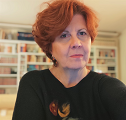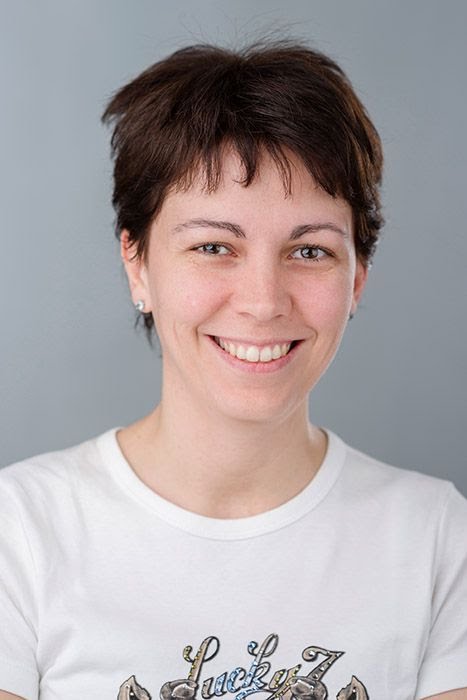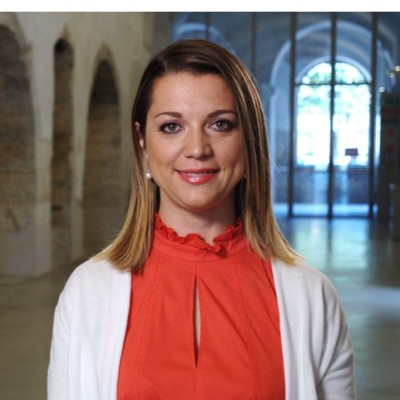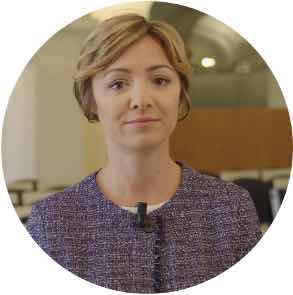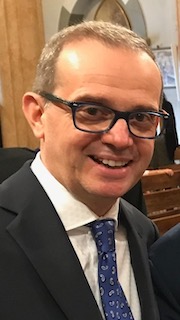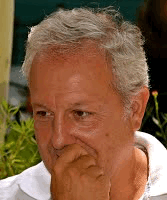Studying at the University of Verona
Here you can find information on the organisational aspects of the Programme, lecture timetables, learning activities and useful contact details for your time at the University, from enrolment to graduation.
Academic calendar
The academic calendar shows the deadlines and scheduled events that are relevant to students, teaching and technical-administrative staff of the University. Public holidays and University closures are also indicated. The academic year normally begins on 1 October each year and ends on 30 September of the following year.
Course calendar
The Academic Calendar sets out the degree programme lecture and exam timetables, as well as the relevant university closure dates..
| Period | From | To |
|---|---|---|
| First semester bachelor degree | Sep 16, 2019 | Jan 10, 2020 |
| Second semester bachelor degree | Feb 17, 2020 | Jun 5, 2020 |
| Session | From | To |
|---|---|---|
| First semester intermediate tests | Nov 4, 2019 | Nov 8, 2019 |
| Winter exam session | Jan 13, 2020 | Feb 14, 2020 |
| Second semester intermediate tests | Apr 15, 2020 | Apr 17, 2020 |
| Summer session exam | Jun 8, 2020 | Jul 10, 2020 |
| Autumn Session exams | Aug 24, 2020 | Sep 11, 2020 |
| Session | From | To |
|---|---|---|
| Autumn Session | Dec 2, 2019 | Dec 4, 2019 |
| Winter Session | Apr 7, 2020 | Apr 9, 2020 |
| Summer session | Sep 7, 2020 | Sep 9, 2020 |
Exam calendar
Exam dates and rounds are managed by the relevant Economics Teaching and Student Services Unit.
To view all the exam sessions available, please use the Exam dashboard on ESSE3.
If you forgot your login details or have problems logging in, please contact the relevant IT HelpDesk, or check the login details recovery web page.
Academic staff
Borello Giuliana
 giuliana.borello@univr.it
giuliana.borello@univr.it
 045 802 8493
045 802 8493
 stefano.gatti@univr.it
stefano.gatti@univr.it

Manzoni Elena
 elena.manzoni@univr.it
elena.manzoni@univr.it
 8783
8783
 martina.menon@univr.it
martina.menon@univr.it
Study Plan
The Study Plan includes all modules, teaching and learning activities that each student will need to undertake during their time at the University.
Please select your Study Plan based on your enrollment year.
1° Year
| Modules | Credits | TAF | SSD |
|---|
2° Year activated in the A.Y. 2020/2021
| Modules | Credits | TAF | SSD |
|---|
3° Year activated in the A.Y. 2021/2022
| Modules | Credits | TAF | SSD |
|---|
| Modules | Credits | TAF | SSD |
|---|
| Modules | Credits | TAF | SSD |
|---|
| Modules | Credits | TAF | SSD |
|---|
| Modules | Credits | TAF | SSD |
|---|
Legend | Type of training activity (TTA)
TAF (Type of Educational Activity) All courses and activities are classified into different types of educational activities, indicated by a letter.
Type D and Type F activities
Nei piani didattici di ciascun Corso di studio è previsto l’obbligo di conseguire un certo numero di crediti formativi mediante attività a scelta (chiamate anche "di tipologia D e F").
Oltre che in insegnamenti previsti nei piani didattici di altri corsi di studio e in certificazioni linguistiche o informatiche secondo quanto specificato nei regolamenti di ciascun corso, tali attività possono consistere anche in iniziative extracurriculari di contenuto vario, quali ad esempio la partecipazione a un seminario o a un ciclo di seminari, la frequenza di laboratori didattici, lo svolgimento di project work, stage aggiuntivo, eccetera.
Come per ogni altra attività a scelta, è necessario che anche queste non costituiscano un duplicato di conoscenze e competenze già acquisite dallo studente.
Quelle elencate in questa pagina sono le iniziative extracurriculari che sono state approvate dal Consiglio della Scuola di Economia e Management e quindi consentono a chi vi partecipa l'acquisizione dei CFU specificati, alle condizioni riportate nelle pagine di dettaglio di ciascuna iniziativa.
Si ricorda in proposito che:
- tutte queste iniziative richiedono, per l'acquisizione dei relativi CFU, il superamento di una prova di verifica delle competenze acquisite, secondo le indicazioni contenute nella sezione "Modalità d'esame" della singola attività;
- lo studente è tenuto a inserire nel proprio piano degli studi l'attività prescelta e a iscriversi all'appello appositamente creato per la verbalizzazione, la cui data viene stabilita dal docente di riferimento e pubblicata nella sezione "Modalità d'esame" della singola attività.
ATTENZIONE: Per essere ammessi a sostenere una qualsiasi attività didattica, inlcuse quelle a scelta, è necessario essere iscritti all'anno di corso in cui essa viene offerta. Si raccomanda, pertanto, ai laureandi delle sessioni di dicembre e aprile di NON svolgere attività extracurriculari del nuovo anno accademico, cui loro non risultano iscritti, essendo tali sessioni di laurea con validità riferita all'anno accademico precedente. Quindi, per attività svolte in un anno accademico cui non si è iscritti, non si potrà dar luogo a riconoscimento di CFU.
| years | Modules | TAF | Teacher |
|---|---|---|---|
| 1° 2° 3° | Enactus Verona 2020 | D |
Paola Signori
(Coordinator)
|
| 1° 2° 3° | Parlare in pubblico e economic writing | D |
Martina Menon
(Coordinator)
|
| 1° 2° 3° | Samsung Innovation Camp | D |
Marco Minozzo
(Coordinator)
|
| 1° 2° 3° | Simulation and Implementation of Economic Policies | D |
Federico Perali
(Coordinator)
|
| years | Modules | TAF | Teacher |
|---|---|---|---|
| 1° 2° 3° | Simulation and Implementation of Economic Policies | D |
Federico Perali
(Coordinator)
|
| years | Modules | TAF | Teacher |
|---|---|---|---|
| 1° 2° 3° | Parlare in pubblico e economic writing | D |
Martina Menon
(Coordinator)
|
Microeconomics (2020/2021)
Teaching code
4S00239
Academic staff
Coordinator
Credits
9
Language
Italian
Scientific Disciplinary Sector (SSD)
SECS-P/01 - ECONOMICS
Period
primo semestre (lauree) dal Sep 28, 2020 al Dec 23, 2020.
Learning outcomes
The aim of this unit is to provide students with appropriate tools for understanding how firms and consumers take their decisions and how markets are organized, with particular emphasis on the concepts of optimization and equilibrium. Upon completing the course, the student must demonstrate to know the organization of the markets and the behavior of firms and consumers within such markets. The student will also be able to express judgments on the implications deriving from the economic agents’ choices and to compare the different market structures.
Program
Textbook (recommended) "Microeconomia" by Hal R. Varian, Cafoscarina, 2011.
Additional material is available on the e-learning website.
Consumer Theory:
• Budget constraint (Varian, Chapter 2).
• Preferences and indifference curves (Varian, Chapter 3).
• Utility (Varian, Chapter 4).
• Choice (Varian, Chapter 5).
• Demand (Varian, Chapter 6).
• Slutsky equation (Varian, Chapter 8).
• Buying and selling (Varian, Chapter 9).
• Intertemporal Choice (Varian, Chapter 10).
• Choice under uncertainty (Varian, Chapter 12).
• Consumer's Surplus (Varian, Chapter 14).
• Market demand and elasticity (Varian, Chapter 15).
• Equilibrium (Varian, Chapter 16).
Production Theory:
• Technology (Varian, Chapter 18).
• Profit maximization (Varian, Chapter 19).
• Cost minimization (Varian, Chapter 20).
• Cost Curves (Varian, Chapter 21).
Market structure:
• Perfect competition in the short and the long term (Varian, Chapters 22 and 23).
• Monopoly (Varian, Chapter 24).
• Oligopoly (Varian, Chapter 27).
Interaction:
• Nash equilibrium and Game Theory (Varian, Chapter 28).
• Exchange (Varian, Chapter 31).
| Author | Title | Publishing house | Year | ISBN | Notes |
|---|---|---|---|---|---|
| Cipriani G.P., Fioroni T. | Esercizi di Microeconomia (Edizione 4) | Giappichelli | 2020 | 9788892109308 | |
| Varian H. | Microeconomia (Edizione 8) | Cafoscarina | 2011 | 9788875433079 |
Examination Methods
Students' preparation will be assessed through an online exam, which is composed by a written and oral part. Only if the written part is evaluated not less than 18/30, a student can have access to the oral part.
The written part will be implemented via a Moodle quiz and performed in streaming via Zoom. It will assess the students' accurate and thorough understanding of the topics explained during the course. It will consist of a test of 10 multiple-choice questions. Some questions will be about theory, others will require to solve exercises to verify the students' ability to use theoretical tools for solving empirical questions. The multiple-choice questions will be graded as follows: +3 for each correct answer, −1/3 for each wrong answer, 0 for each question left unanswered.
The oral part will be conducted online via Zoom. It will cover the entire program and aims at verifying the students' analytical abilities and their use of appropriate language.
The exam is considered as “failed” if the student does not score at least 18/30 at the written part.
If the score is at least 18/30, the final grade will be the weighted average of the grades of the written and oral parts, with the following weights:
- 50% written part
- 50% oral part
Hence, each part will have the same weight in the calculation of the final grade.
Career prospects
Module/Programme news
News for students
There you will find information, resources and services useful during your time at the University (Student’s exam record, your study plan on ESSE3, Distance Learning courses, university email account, office forms, administrative procedures, etc.). You can log into MyUnivr with your GIA login details: only in this way will you be able to receive notification of all the notices from your teachers and your secretariat via email and soon also via the Univr app.
Graduation
List of theses and work experience proposals
| theses proposals | Research area |
|---|---|
| Proposte di tesi triennali | Various topics |



